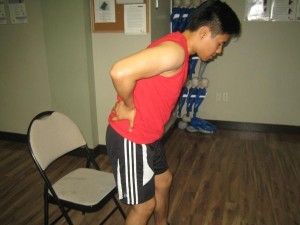Hip bursitis involves the inflammation of a bursa or small sac of fluid amidst the tendon and bone which helps prevent friction. The bursa can become inflamed which results to pain in the hip area.
https://www.youtube.com/watch?v=f4xKBwX0FLc
What are the symptoms?
The symptoms of hip bursitis typically include pain on the exterior of the hip that is worsened during activities such as climbing stairs, running or getting out a vehicle. It is important to note that the pain will steadily worsen and there is tenderness on the exterior of the hip once pressed in. Additionally, the pain can also radiate down the exterior of the thigh. You can learn more about pain management measures by enrolling in a first aid class.

Overview on hip bursitis
The bursa is a small-sized sac of fluid that is typically positioned in between a bone and a muscle or tendon. The role of the bursa is to avoid friction amidst the bone and superimposed soft tissue. There are a number of bursas that surround the hip joint which includes the following:
- Trochanteric bursa is on the exterior side of the hip in between the greater trochanter and the attachments of the gluteal muscles.
- Iliopsoas bursa is situated in between the iliopsoas muscle at the front of the hip joint and the underlying bone.
- Gluteus medius bursa is a smaller bursa amidst the gluteus medius muscle and the greater trochanter that is medial to the trochanteric bursa.
- Ischial bursa is situated in between the hamstring tendons and the base of the pelvis.
Generally, the prevalent type of hip bursitis involves the trochanteric bursa. This can be damaged in various ways such as direct impact to the bursa such as falling onto the exterior hip or monotonous friction from the overlying muscles and tendons, typically during running. The repeated friction will cause the bursa to inflame or swell. Once the tendons rub against the bursa, it will cause pain.
Hip bursitis can be caused by various factors including a fall onto the side of the hip. In most cases of bursitis, they are caused by overuse injuries due to biomechanical abnormalities. If the individual overpronates, he/she is at risk for this injury as the knee falls inwards which increases the angle at the hip. Weakness in the hip abductors particularly the gluteus medius can cause the similar effect.
Treatment
The individual must rest until there is no pain. If the individual continues to train, it will only increase the inflammation and prevent the condition from properly healing. You can apply an ice pack to the area to minimize the pain and inflammation. The cold can be applied for 10 minutes every hour and reduced to 3-4 times a day as the injury starts to heal. It is recommended to run on flat surfaces to minimize the pressure on the bursa. If possible, it is best to consult a sports injury professional.
When a doctor is consulted, anti-inflammatory medications are prescribed to minimize pain and inflammation. In most cases, the doctor will request an X-ray or MRI to confirm if the injury is caused by a bone spur. Orthotic insoles for the feet are prescribed to correct poor foot biomechanics.
